Building a Scarab boat using Stitch and Glue panels
All of Ray's designs using plywood Stitch and Glue method of construction have chines.
Since moulded production boats are built using moulds and gel coat it has been fashionable to have rounded shape boats because they are easier to remove from the moulds. There is a trend to move
back to boats with chines. These are easier for the home-builder to create a boat with limited experience and resources.
Stitch and glue is a very forgiving method of boatbuilding for beginners. This method of building uses high-grade marine plywood and epoxy resin.
The sheets of plywood have a soak coat of epoxy resin applied and then lightly sanded.
Plywood normally comes in 4 x 8 feet panels. In Europe there are slightly longer ones, but the panels should be scarfed together to the length of the boat.
Using a Scarfing attachment on a circular saw (available from ATL Composites Pty Ltd) prepare the ends of the ply sheets for scarfing. Prime the cut exposed ply edge with unthickened resin and
let soak in before applying the thickened resin (adhesive), align the sheets and clamp or staple the joint until the resin cures, clean up with the sander if necessary.
Make a batten for drawing the panels by scarfing lengths of 20x6 silky oak or similar to make a batten about 10 metres long. Handle this piece of equipment with care as you will use it
quite often. First check that one edge of your large sheet of ply is straight, plane back if necessary, this will be the base line. Mark off along the base line at 500mm spaces and with a square
draw a pencil line through each mark to the other edge of the ply. Using the dimensions measure up from the base line and make a mark on each line for the top and bottom of the panel. Bend your
previously made batten around so that one edge passes through the pencil marks, thin nails (panel pins) are used to support the batten but don't nail through it or an unfair curve will be produced.
When the set out of the panels is complete stack another ply sheet (scarfed to length) under the first, clamp and then cut out with a jig saw, this will produce identical panels for port and starboard.
Coat the cut edges of ply with resin and allow to soak in and cure. Sand when cured. At approximately 100mm centres and 10mm from the edge of the panels drill 2mm diameter holes (does not have to be
exact but using a simple jig helps, start from the aft end so the holes line up on adjacent panels).
Usually wire can be obtained from shops that rewind electrical motors. Copper wire is best. Using steel wire can leave a rust mark on the plywood is the panel is exposed to moisture.
Cut thin wire into short pieces about 60-80mm long, pass through adjacent holes and twist together. Make sure the edges are fair, adjust the wires if necessary and "tack weld" together by applying
small amounts of filleting compound between every second or third wire. (note: the tacking fillet must be smaller than the final fillet or it will cause unfair lumps in the joint).
Measure the epoxy carefully and mix thoroughly otherwise it will not harden properly and you will end up with sticky spots. Before adding the silica but after mixing your epoxy, put aside a small
amount and use this liquid epoxy to wet the spots you will be gluing. Plywood sometimes absorbs quite a lot of epoxy on the edges so it's a good idea to wet them first with a small brush dipped
in epoxy.
Filler can be purchased or made yourself by adding Aerosil (Cabosil) or cotton fibres to epoxy resin.
When the tacks have cured the wires are removed and the whole joint filleted with filleting compound making a smooth radiused fillet. The fillet adds a great deal
to the strength to the joint. The epoxy fillet is an extremely strong, stronger than the wood itself.
Each panel and edge are sealed with Epoxy resin and the boat is sealed inside and out. This keeps out the moisture so paints and finished are less prone to cracking.
In some of our designs the joints are taped and some required the whole boat be covered with glass.
If you want to read more about plywood boat construction both of these books are available from Amazon.com
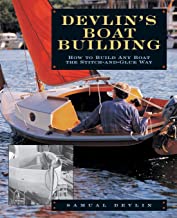
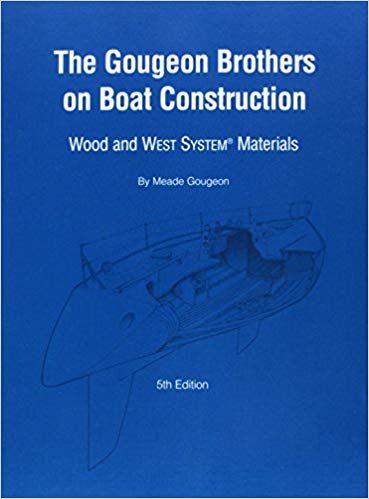
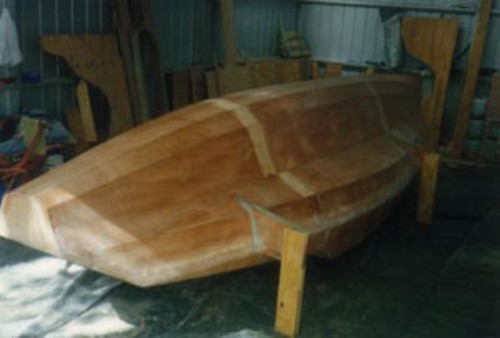
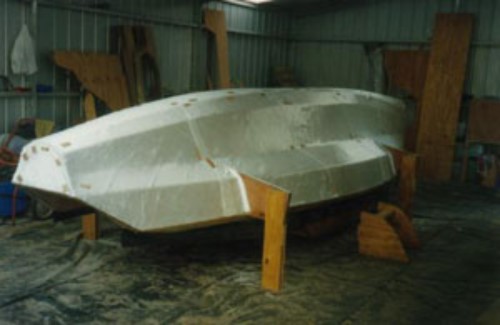
Scarab 670 main hull covered with glass
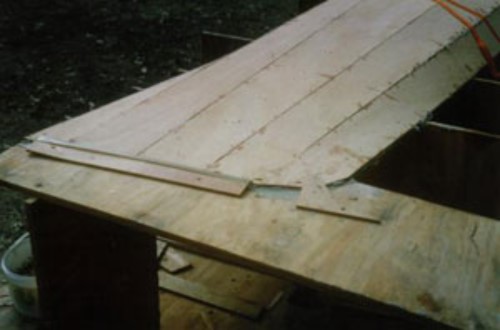
Scarab 670. Nose stitched together with wire.
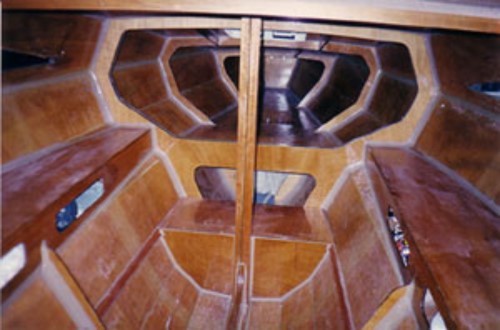
Interior of the Scarab 670 showing the fillets.